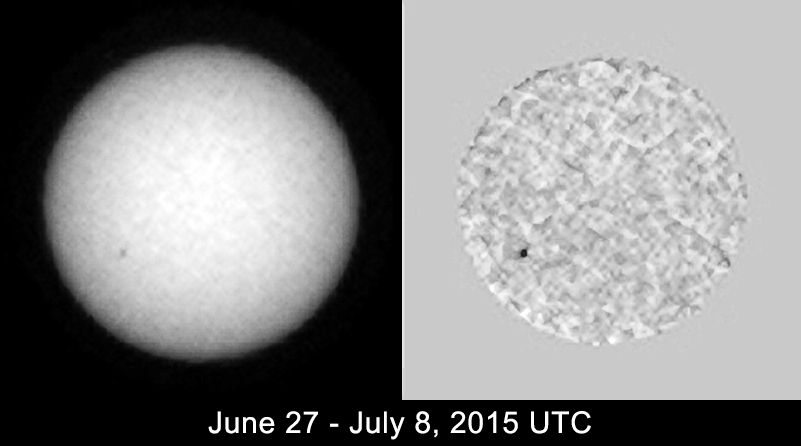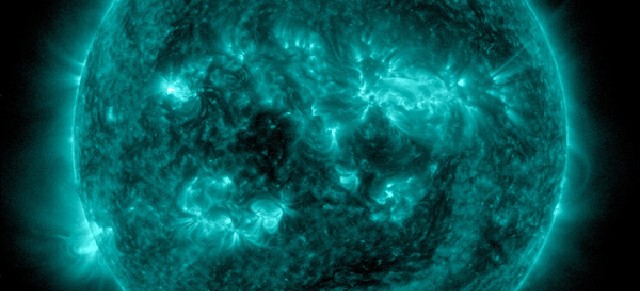As Curiosity works its way up Mount Sharp on Mars, studying rock and soil samples, it’s also helping scientists observe sunspots on the far side of the Sun.
From its vantage point on Mars, Curiosity currently has a good view of the side of the Sun that’s pointed away from Earth, and its mast camera (Mastcam) is sending home images of sunspots that can help scientists better understand solar emissions.
That’s not just a matter of academic interest. Sunspots that form on the far side of the Sun will rotate to face Earth within a few days, since it only takes about a month for the Sun to rotate completely. “One sunspot or cluster that rotated out of Curiosity’s view over the July 4 weekend showed up by July 7 as a source area of a solar eruption observed by NASA’s Earth-orbiting Solar Dynamics Observatory,” said NASA in a press release.

Watch the sunspot rotate across Curiosity’s field of view. Image credit: NASA

The Solar Dynamics Observatory view of those same sunspots. Image credit: NASA
It’s helpful to have information about sunspots before they rotate into view, so we can predict and prepare for the effects of solar emissions, which astronomers call space weather.
The trouble is that when a spacecraft is on the far side of the Sun, it’s also out of communication with Earth. That’s where NASA’s Sun-monitoring spacecraft STEREO-A is at the moment. Last month, Curiosity was also out of communication while Mars’ orbit carried it behind the sun, but it’s been bacck in touch since late June. STEREO-A will be able to phone again later in July, but for now, Curiosity is helping fill the gap.
That came about almost by accident. Part of Curiosity’s mission is to study how bright the Sun appears through the dusty Martian atmosphere, so the rover often takes images of the Sun from Mars. In April, Mastcam snapped an image of a Martian sunset while Mercury passed between Mars and the Sun — and also captured a few sunspots.
“We saw sunspots in the images during the Mercury transit, and I was trying to distinguish Mercury from a sunspot,” said Mastcam scientist Mark Lemmon in a NASA press release. “I checked with heliophysicists who study sunspots and learned that STEREO-A was out of communications, so there was no current information about sunspots on that side of the sun. That’s how we learned it would be useful for Curiosity to monitor sunspots.”
The moral of the story? Even if you’re a hard-working robot, climbing on a mountain on another planet, it pays to look up once in a while.
[NASA]
Contact the author at k.smithstrickland@gmail.com or follow her on Twitter.
